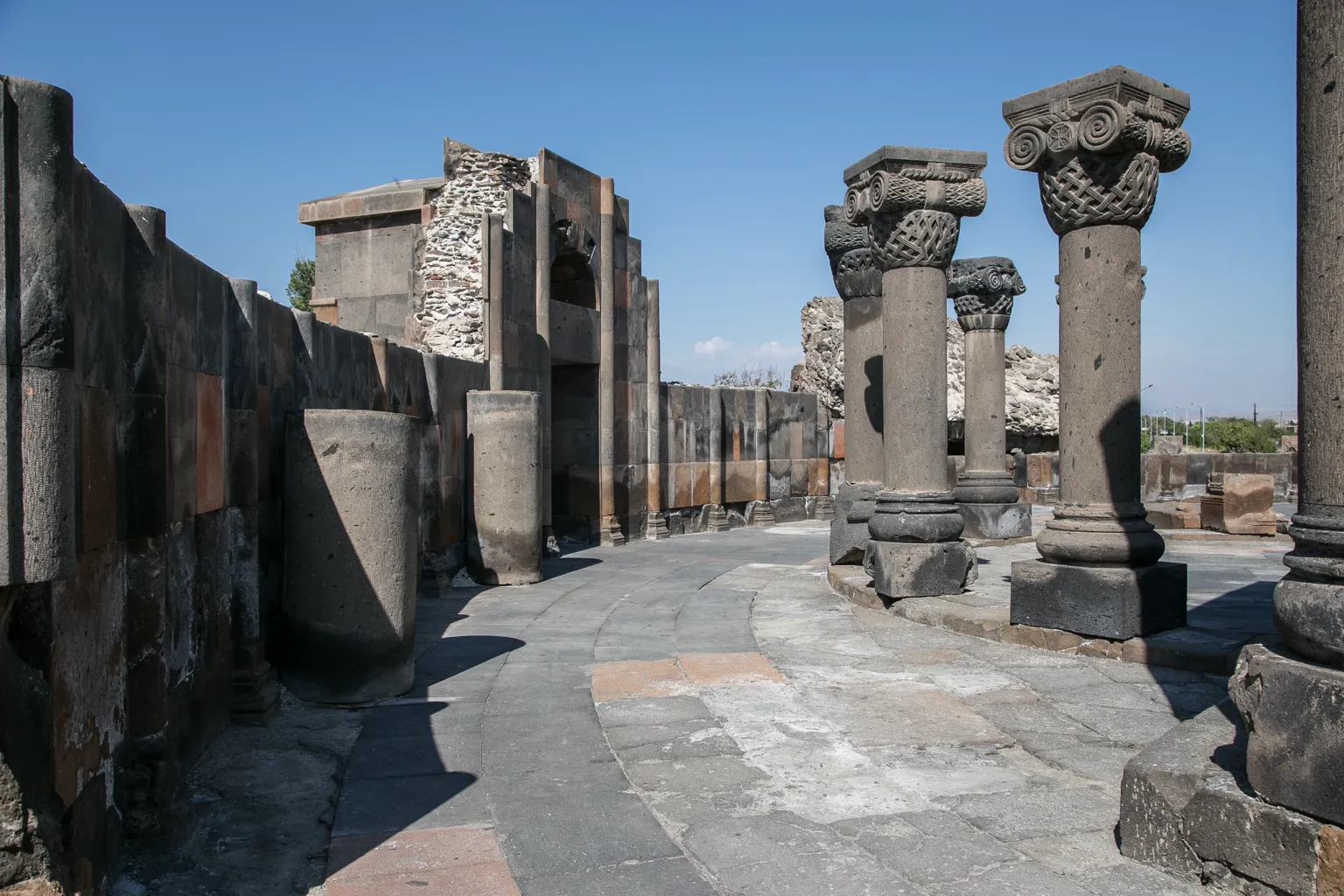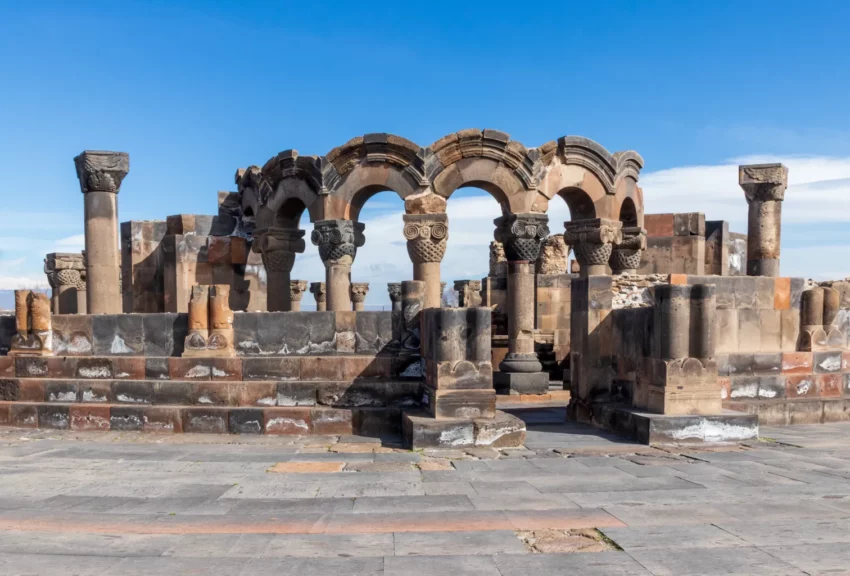Overview of Zvartnots Cathedral
Zvartnots Cathedral, a significant relic of medieval Armenian architecture, is located near Vagharshapat, Armenia. Constructed in the 7th century AD, this cathedral is renowned for its distinctive circular design and complex structural features, which include interior piers supporting a multi-tiered arrangement topped by a dome. Despite its current state of ruin, Zvartnots remains a pivotal study subject in the evolution of Armenian ecclesiastical architecture.
Get your dose of History via Email
Historical Context and Construction
The construction of Zvartnots Cathedral commenced in AD 643 during the initial Muslim Arab incursions aimed at seizing Byzantine and Sasanian Armenian territories. Under the supervision of Catholicos Nerses III the Builder, also known as Shinogh, the cathedral was intended to honor St. Gregory and was reportedly built on the historical meeting site of King Trdat III and Gregory the Illuminator. The consecration of the cathedral took place in AD 652, as documented by the medieval Armenian historian Movses Kaghankatvatsi.
From AD 653 to 659, while Nerses was in Tayk, the construction was overseen by Anastas Akoratsi. Following the Arab capture of Dvin and the intensifying conflicts between the Byzantine and Arab forces, Nerses moved the patriarchal seat from Dvin to Zvartnots, further signifying the cathedral’s importance.

Architectural Design
Zvartnots Cathedral was constructed with a centrally planned, aisled tetraconch layout, featuring an interior shaped like a Greek cross with an encircling aisle, while externally it presented as a 32-sided polygon, giving the appearance of a circular structure from afar. The design incorporated influences from Syrian and northern Mesopotamian architecture, evident in elements like basket capitals with Ionic volute mounts, eagle capitals, and vine scroll friezes.
The cathedral stood for approximately 320 years before its collapse in the 10th century, a subject of ongoing debate among historians and archaeologists. The prevailing theory suggests an earthquake as the cause, although the cathedral’s robust engineering aimed to withstand such disasters for up to 1,000 years, anticipating the second coming of Christ.
Excavations and Discoveries
The ruins of Zvartnots were extensively excavated in the early 20th century, from 1901 to 1907, under the direction of Khachik vardapet Dadian. These excavations revealed not only the cathedral’s foundations but also remnants of the catholicosal palace and a winery. Interestingly, the site was found to be built over earlier structures dating back to the reign of Urartian king Rusa II.
Reconstruction Controversies and Interpretations
The reconstruction of Zvartnots has been a topic of scholarly debate. The 1905 reconstruction proposal by Toros Toramanian suggested a three-floor structure, a theory that has faced criticism for its perceived architectural impracticalities. Alternative reconstructions have been proposed, reflecting ongoing discussions about the cathedral’s original appearance and structural logic.
Cultural Significance and Legacy
Zvartnots’ architectural innovations have inspired several modern constructions, including the Holy Trinity Church in Yerevan, modeled after Zvartnots by architect Baghdasar Arzoumanian and completed in 2003. The cathedral’s historical and cultural significance was further recognized when it was added to the UNESCO World Heritage list in 2000, alongside other churches in Vagharshapat.
In conclusion, Zvartnots Cathedral, despite its ruined state, continues to be a symbol of medieval Armenian architectural ingenuity and a subject of significant historical and cultural interest. Its legacy persists not only in scholarly studies but also in its influence on contemporary architectural practices.
Sources:

